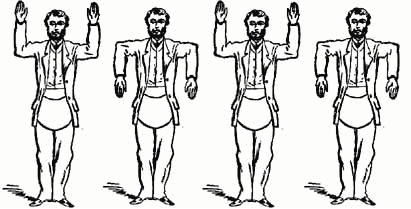New year’s resolution: stop making promises. A late offer of a car trip through the countryside over the weekend crueled my plans for staying home updating a silly old blog.
Also, I’ve thought about offering my own review of 2008, as others have done, but unlike last year no neat list comes to mind. For a number of reasons both within and outside of my control it was a sketchy, underwhelming year. Not enough travel, not enough art, not enough pleasant social intercourse.
For the greater part of the year I was preoccupied with legal hassles involving the dodgy dealings of a real estate company who lost some money I’d paid them, which they decided entitled them to send the bailiffs around demanding I pay them again, plus interest. So for me, when I think highlights of the year, I think of taking those chancers to court and watching the judge smacking them – almost literally.
Apart from that, the thing that really sticks out is, a year after his death, just how important Stockhausen is to music, and probably to the arts in general. Over the past year his name has come up again and again. I saw and heard more by and about Stockhausen in the past year than in the rest of my life put together. In fact, I’ll be hearing more later this month.
Filed under: Self-promotion by Ben.H
1 Comment »
Normal activity resumes tomorrow
Thursday 1 January 2009
The new computer is being broken in. Happy 2009 to everyone.
Filed under: Self-promotion by Ben.H
No Comments »
END YEAR: CATASTROPHIC HARD DRIVE FAILURE
Friday 26 December 2008
Filed under: Self-promotion by Ben.H
3 Comments »
Please Mister Please
Tuesday 23 December 2008
Anthony Pateras/Slave Pianos, “Santa’s Bells (after Mike Kelley)” (1999). Tom Chiu, violin.
(3’03”, 3.75 MB, mp3)
Filed under: Please Mister Please by Ben.H
No Comments »
Filler By Proxy LXVI: Ist das Leben nicht schön?
Tuesday 23 December 2008
Right after Die Hard, A Christmas Story and Lethal Weapon, It’s A Wonderful Life is my fourth-favourite christmas movie. Last year I linked to Gilbert Sorrentino’s remarkable interpretation of Capra’s movie as an essay in digust with modern American life. This year’s heartwarming message of cheer comes from Soho the Dog: Strauss and Mahler re-enact It’s A Wonderful Life.
Filed under: Filler By Proxy, Film, Music by Ben.H
No Comments »
Cabin Fever
Friday 19 December 2008
As in I’ve been cooped up at home the last three days alternately sweating and shivering with alarming rapidity. That’s all I got. What’s happening with youse guys?
Filed under: Self-promotion by Ben.H
1 Comment »
Please Mister Please
Monday 15 December 2008
Megan Roberts, “I Could Sit Here All Day” (1976). Phil Loarie and William Novak, voices; Danny Sofer, drums.
(6’25”, 8.98 MB, mp3)
Filed under: Please Mister Please by Ben.H
No Comments »
Busy, Busy World
Monday 15 December 2008
“Later that year Zuckermann abandoned his harpsichord business and America in disgust at the country’s involvement in the Vietnam War.”
It’s a good story about how a search to find Olivier Messiaen’s birthplace in Avignon leads to a conversation with the man who used to provide harpsichords for John Cage, but that sentence belongs in an old Woody Allen story.
II. She Sees Red:
Once upon a time, Banksy visited Melbourne and left a piece of street art. Culture-conscious locals preserved the ephemera with a sheet of perspex. Unknown vandal/artist restores the natural order of things by tipping paint down the back of the perspex. The obliterated artwork is tagged “Banksy Woz Ere”.
Filed under: Art, Music by Ben.H
1 Comment »
Boulez plays Boulez
Sunday 14 December 2008
Two centenaries on successive days: Olivier Messiaen (d. 1992) on Wednesday, Elliott Carter (still alive and composing) on Thursday. On each night, Pierre Boulez conducted the Ensemble Intercontemporain in a commemorative concert in London.
I went to only the first gig. There have been Messiaen concerts going on in London all year, and I’ve missed all of them up until now. My main motivation for going was that Boulez is one of the few remaining survivors of the 1920s generation, so I thought I’d better take this chance to see him in action, particularly as he was conducting his former teacher, and his own music as well. I’d been to some concerts of Carter’s music before, and had heard most of the pieces on the Thursday programme before, so I gave that a miss.
The two Messiaen works were from the early 1960s, both premiered by Boulez: Couleurs de la cité céleste and Sept haïkaï. Both works put Messiaen’s taste for the hieratic and the ritualised to the forefront. The former is a static processional for winds, brass, piano and percussion, creating sounds suitably imposing, rather than seductive. The latter’s short movements show the influence of Messiaen’s visit to Japan; less, thankfully, in musical exoticism and more in an affinity with the sense of eternal time expressed in traditional gagaku court music. It’s a suprising piece for Messiaen, particularly in the dense passaages of unusually thorny textures.
After the interval (where we witnessed at the bar a distinguished lady of advanced years scull a large rioja, either to recuperate from the first half or to fortify herself for the second) Boulez conducted his own work from the late 90s, Sur incises. The piece is an expansion of his piano piece Incises into a work for a hyper-instrument consisting of three identical groups of piano, harp, and percussion. It’s all very nice, but it’s a little too typical of much of Boulez’s later music, and its obsession with the doubling (or tripling) and shadowing of instruments, from Répons onwards. Long, agile phrases of melody contrast with sustained moments of stillness, impeccably put together but always feeling a little to mellow. The intellectual and emotional punches of his earlier music are all being pulled here.
On stage Boulez, combover intact, was a model of self-effacement, even taking a detour round the back of the piano each time he walked to his podium. My lovely companion F, who has suffered under conductors of varying degrees of waywardness, admired the undemonstrative directness and lucidity of his conducting.
Filed under: Music by Ben.H
No Comments »
Hentai-Oto-Ma
Thursday 11 December 2008
(This post is dedicated to the Slavic readers who can’t get enough of the two censored anime pictures on this page.)
Months ago I posted a spectrogram of a passage from my composition Hentai-Oto-Ma, and completely forgot to upload the sound file of the same section for comparison. So here it is.
Hentai-Oto-Ma was made using Coagula Light, a shareware “colour-organ” that interprets digital images as sound spectra (height=frequency, width=time). The image source for this piece was a pornographic Japanese manga comic: each digitally scanned frame of the comic was interpreted with five different, variable time-frames and pitch ranges. The five sequences of frames are played simultaneously, each subjected to different filtering and panning processes. In effect, the piece is a type of timbral canon, with the same series of tone structures transposed into different frequencies and durations – this can be heard most clearly at the end of the piece.
The left half of the picture above shows selected frames from the original comic. On the right is a spectrographic analysis of right channel of Hentai-Oto-Ma (0’28” to 0’39”) showing the images transformed across time and frequency.
Click here to hear an mp3 of the above excerpt; or listen to the whole thing (11 minutes, 17 MB mp3.) If that’s not enough, you can read more about this and related pieces for cheapo digital synthesis (and get another mp3).
Filed under: Music by Ben.H
No Comments »
George Brecht Event
Tuesday 9 December 2008
The Most Useful Piece of Advice You’ll Get All Year
Monday 8 December 2008
Got a tune stuck in your head and you just have to get rid of it? The Girl From Ipanema. It wipes the music part of your brain and then fades away. Works every time.
I recommend track 21 on that linked page.
(Crossposted at Sarsaparilla.)
Filed under: Journalism, Music by Ben.H
No Comments »
Please Mister Please
Sunday 7 December 2008
Ninetynine, “Hawaii” (1997).
(3’17”, 3.78 MB, mp3)
Filed under: Please Mister Please by Ben.H
No Comments »
Exciting Housekeeping Stuff
Sunday 7 December 2008
For the sake of completeness, the full post on Google vs Death has now been included in this blog, having originally appeared at Sarsaparilla.



